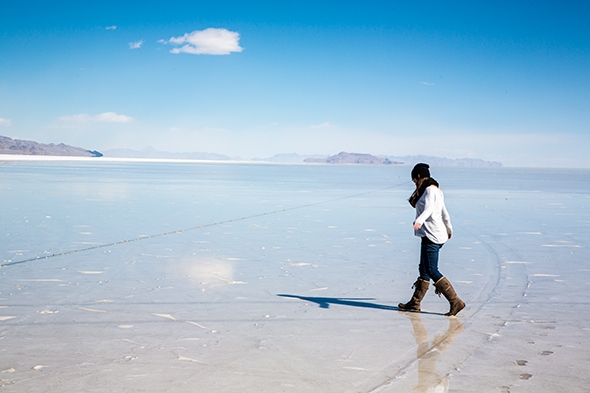


Meaning, more water coming from the Silver Island Mountains. Keach believes that groundwater is the key to increasing the size of the Bonneville Salt Flats. “They’ve been doing this historically for a long time.” “You can go into Google Earth and look, in an ad hoc way, and look at the last thirty years, or forty years of imagery across the salt flat … and you see the salt flat expand and contract,” Keach said. The idea is to add more water to the surface, which leads to evaporation, and more salt “growing.”īut Keach said a more scientific approach is needed that directs how much water to lay down, and when to lay it down. Keach said that projects have been proposed that would manually pump salt water from beneath the flats to the surface of the flats. Reversing the shrinking Bonneville Salt Flats? It is located along I-80 near the Utah-Nevada border. The Salt Flats are located 120 miles west of Salt Lake City, Utah just off of Interstate 80 before the state border at Wendover, Utah.The paved access road leading to the Salt Flats is reached by taking Exit 4 off I-80. Stretching over 30,000 acres, the Bonneville Salt Flats is a fragile resource administered by the Bureau of Land Management. So how are the two related? As the Great Salt Lake decreases, and the thickness of the flats decreases, the racing distance gets shorter. The Bonneville Salt Flats is one of the most unique natural features in Utah. And the surface, which isn’t 100% dry, keeps tire temperatures down at high speeds.


 0 kommentar(er)
0 kommentar(er)
